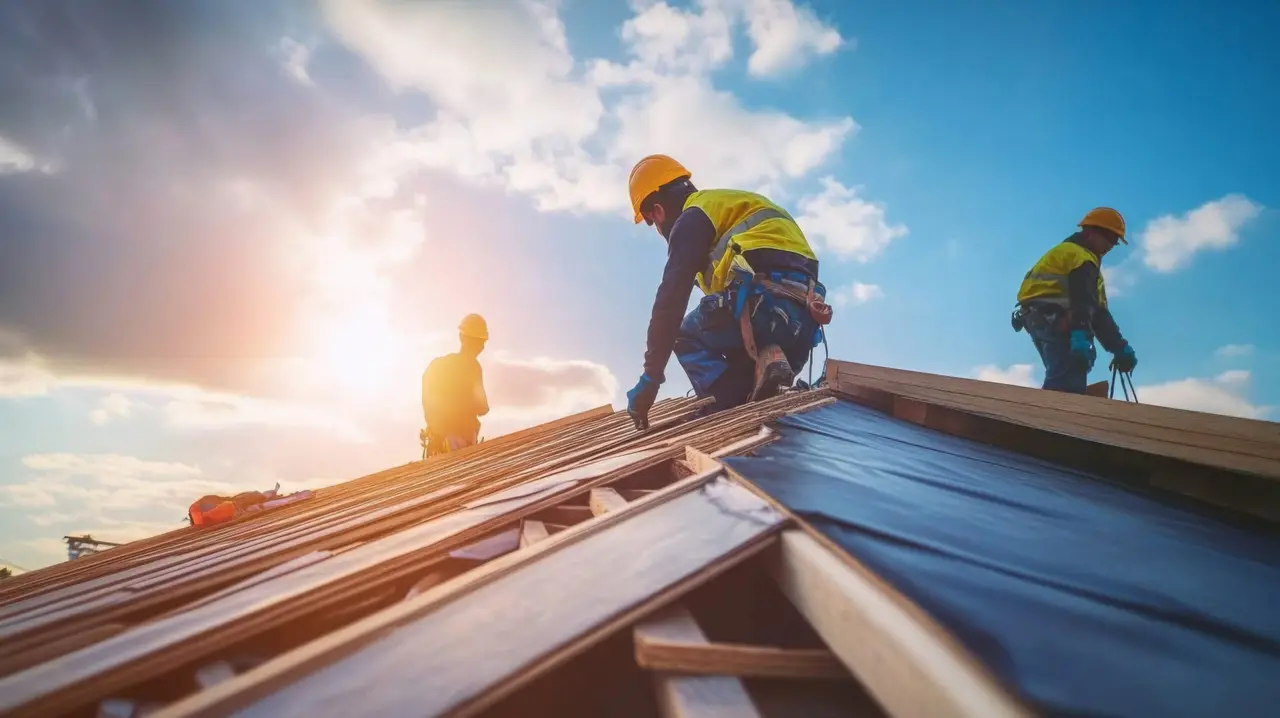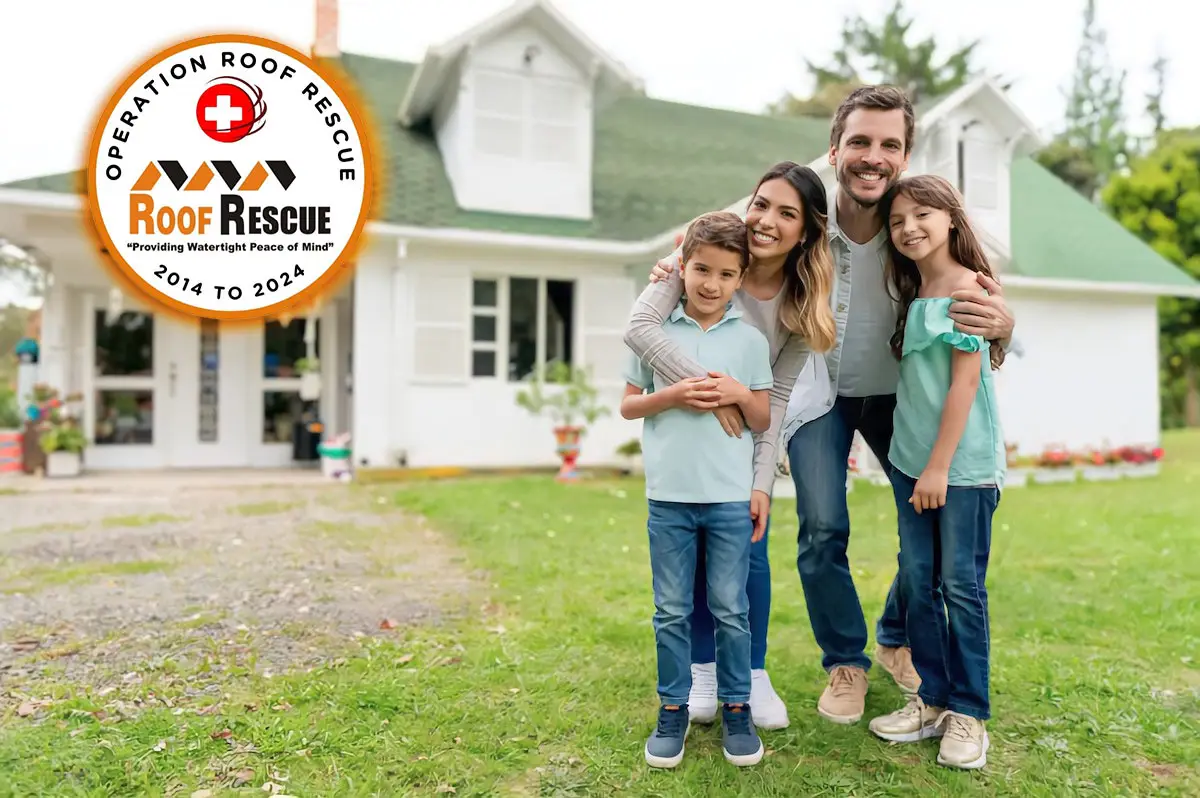
Roof Inspection Checklist: Expert Tips from Roof Rescue
Thinking about your roof probably isn’t your favorite pastime. But ignoring it can lead to some serious headaches down the road. Using a comprehensive roof inspection checklist is a smart way to catch small problems before they become expensive disasters and keep your home safe.
Your roof is your home’s first line of defense against rain, snow, wind, and sun. Keeping it in good condition is vital for protecting everything underneath it, including your family and belongings. A regular inspection using a good roof inspection checklist helps you stay ahead of potential trouble with your residential roofing.
Table of Contents:
- Why Bother Inspecting Your Roof?
- When Should You Do a Roof Check?
- Can You Do It Yourself, or Should You Call a Pro?
- DIY vs. Professional Roof Inspections Comparison
- Your Detailed Roof Inspection Checklist
- Exterior Roof Examination
- Interior Roof Check
- Signs You Should Never Ignore
- Understanding What You Find
- What to Do After Your Roof Inspection
- Why Choose Roof Rescue?
- Conclusion
Why Bother Inspecting Your Roof?
It’s easy to put off roof maintenance. However, catching damage early saves money and helps avoid full roof replacements. It extends your roof’s lifespan, supports resale value, helps with insurance claims, and prevents leaks that cause structural damage or mold. Inspections are fundamental to responsible homeownership.
When Should You Do a Roof Check?
Inspect your roof at least once annually—ideally twice: in spring and fall. Always check after major weather events. Older roofs or homes for sale may require more frequent assessments. And if you notice anything suspicious—like a water stain—inspect immediately.
Can You Do It Yourself, or Should You Call a Pro?
You can perform basic checks from the ground or inside the attic. But climbing onto the roof is risky. Professionals like Mark Franklin and the team at Roof Rescue have the training, equipment, and experience to conduct a thorough, safe inspection. Plus, professional inspections can identify early signs of damage that non-experts might miss.
DIY vs. Professional Roof Inspections Comparison
Here’s a quick side-by-side of what each inspection approach offers:
- DIY: Basic visual check, limited scope, free, but lacks expertise.
- Professional: Full roof access, expert tools, detailed reports, safe, insurance-compliant, and includes preventive recommendations.
Your Detailed Roof Inspection Checklist
1. Exterior Roof Examination

- Look for missing, cracked, curling, or blistering shingles.
- Inspect for granule loss in gutters (a sign of aging shingles).
- Check flashing around vents, chimneys, and skylights for rust or separation.
- Examine roof valleys and edges for signs of wear.
- Make sure gutters and downspouts are secure and draining properly.
- Note any sagging rooflines or pooling water.
- Watch for moss, algae, or lichen growth, which can signal trapped moisture.
- Inspect soffits and fascia boards for water stains or rot.
2. Interior Roof Check

- Check the attic for moisture, mold, or mildew.
- Inspect insulation for dampness or compression.
- Look for water stains, rusted nails, or daylight through boards.
- Check for musty odors or signs of pests.
- Monitor ventilation to ensure proper airflow, reducing moisture buildup.
Signs You Should Never Ignore
- Persistent leaks after rainstorms.
- Interior mold or mildew smells.
- Noticeable sagging or dips in the roofline.
- Sudden increase in energy bills (could indicate insulation or ventilation problems).
- Debris falling from the ceiling or attic.
Understanding What You Find
Minor issues like cracked shingles or loose flashing can often be repaired easily. But signs of water stains, mold, or sagging roof lines could point to serious problems. If in doubt, contact a professional roof inspection company for a roof leak inspection and reliable advice. A professional assessment ensures you fully understand the problem and best repair options available.
What to Do After Your Roof Inspection
Take photos, document findings, and prioritize repairs. Contact a reputable local contractor like Roof Rescue to confirm issues and get quotes. Address urgent issues first, particularly leaks and structural concerns. Waiting could mean escalating damage and higher costs. Small issues left unattended often lead to big repairs down the line.
Why Choose Roof Rescue?
Roof Rescue is Idaho Falls’ trusted partner for roof inspection and repair. Led by seasoned roofing expert Mark Franklin, our team combines years of experience, community trust, and superior craftsmanship. We serve Idaho Falls, Pocatello, Twin Falls, Logan (UT), Jackson (WY), and beyond.
Our inspections are thorough, our reporting is clear, and our repairs are reliable. We’re not just a roof inspection company —we’re your neighbors, and we treat every home as if it were our own. Whether you need a simple roof leak inspection or a full roof overhaul, Roof Rescue delivers service you can trust.
Conclusion
Don’t wait until you’re placing buckets in the hallway. Regular inspections, whether DIY or done by the experts at Roof Rescue, are a smart investment in your home’s health. From Idaho Falls to Jackson and beyond, Roof Rescue is the trusted name in roof inspection and repair. Schedule your roof leak inspection today for peace of mind tomorrow.
Mark Franklin and the Roof Rescue team are ready to help—honest, experienced, and committed to keeping your roof in excellent condition. Contact us today for a free consultation and experience the Roof Rescue difference!
Mark Franklin, owner of Roof Rescue in Idaho Falls, Idaho, has been a trusted name in roofing since 2014. Serving Idaho, Montana, Wyoming, and Utah, Roof Rescue specializes in commercial and residential roof replacement and installation. Recognized for community initiatives like the “Operation Roof Rescue” program, which provides free roofs to local heroes, Mark combines professionalism with a passion for giving back. With 16 years of industry experience, an A+ Better Business Bureau rating, and glowing customer reviews, Mark’s leadership embodies quality and community-focused service.



